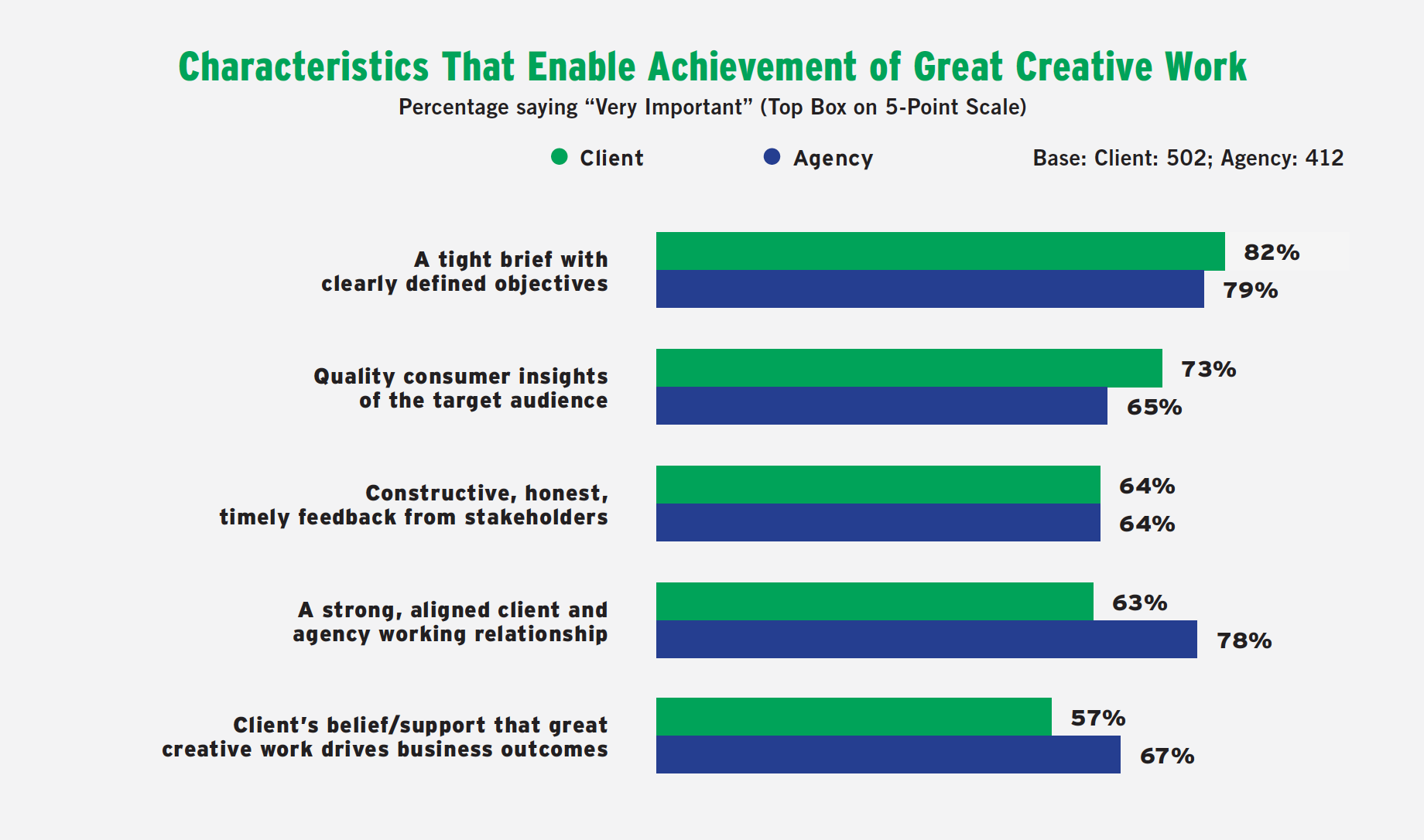A tight brief with clearly defined objectives is very important to enabling great creative work, according to 82% of clients and 79% of agencies surveyed by the ANA (Association of National Advertisers). That made it the number-one factor, ahead of a strong client-agency working relationship, quality consumer insights into the target audience, and constructive, timely stakeholder feedback, among other elements.
Yet too often “people don’t take briefs seriously,” says ANA EVP Stephanie Fierman. “They often view it as either a learning experience or a form that can just be filled out from one case to the next.” And poor creative briefs, lacking clarity and focus, were deemed the most significant roadblock to effective creative campaigns, cited by 57% of clients and 52% of agencies.

Neither Too Long nor Too Short
In its report “Better Creative Briefs for Better Brand Building,” which surveyed 914 brand and agency judges of its program awards, the ANA emphasizes the importance of keeping a brief “tight.” That’s a subjective adjective, however. When asked how to determine whether a brief is too, well, brief, Fierman admits there is no set word count. But four elements, she says, should guide how concise or detailed a brief should be:
- The knowledge and tenure of both the client and the agency. When the partners have worked together over time, they’ll likely share a communication shorthand and understanding of working methods, goals and audiences, enabling their briefs to be more succinct.
- The documents, ranging from brand history to marketing plans to previous campaign examples and results, available to accompany the brief. “If something can be answered by some document I can send over, it shouldn’t be in the brief,” Fierman says. If you have a separate report detailing your target audience’s psychographics and past purchasing behavior, for instance, you don’t need to include that information in the brief.
- The novelty of the project. For instance, a brief for a brand’s first foray into experiential marketing would likely be longer and more detailed than one for its sixth digital campaign.
- The complexity of the competitive environment.
Creative Brief Must-Haves
As for what should be included in a creative brief, first and foremost is “a measurable objective that needs to be solved that everyone agrees to up front—a real KPI,” Fierman says. Another essential is a definition of the target audience that goes beyond demographics, which she says fail to capture the complexity of a market: “You need to really target the emotional tribe you’re going after.” King Charles and Ozzy Osbourne fall into the same demographic bucket, to cite a popular example, but it’s safe to say the psychographics that guide their behavior differ.
An effective brief should also include the key benefit of the product or service being promoted and the “reason to believe.” “A key benefit is more around functional benefits; a reason to believe is more emotional,” Fierman says. The ANA report gives the example of a fictional vacation-planning app targeting “joy-seeking parents.” The app’s key benefit is that it reduces the stress of planning family travel; a reason to believe is that its ease of use adds to the delight of the entire vacation experience.
Other critical elements of a brief include the brand personality, the desired tone of the creative, and of course, the deliverables. Media being used by the brand, budget, timing and legal considerations should be in the brief if they haven’t already been specified elsewhere—and they should always be communicated during the brief presentation regardless.
The Briefing Experience
Although it’s common for the client to write the brief and hand it over to the agency, that’s not necessarily the best course of action. “Both parties should write the brief together,” Fierman contends. “If you have both writing the brief together, and senior people writing it together, you should minimize revisions.”
Even if that’s not possible, both parties should attend the brief presentation. “The criminal mistake is one person at a desk emails a brief to someone else at a desk,” Fierman says. That situation is not conducive to tapping into the mind or emotions of the target audience in that manner or to fostering creativity or innovation.
Ideally the briefing experience should be conducted in person, though remote meetings can work so long as time is scheduled for discussion and further collaboration. When the briefing is held in person, Fierman prefers a setting that will encourage engagement and fuel inspiration: a restaurant for a food brand, for instance.
Regardless of where the brief presentation occurs, only those actively involved in the project or with a direct stake in it should attend. And all pertinent parties—including the client-side executives whose lack of approval could derail the project—need to sign the brief, since it will serve as the reference point for all future discussions of the project going forward.